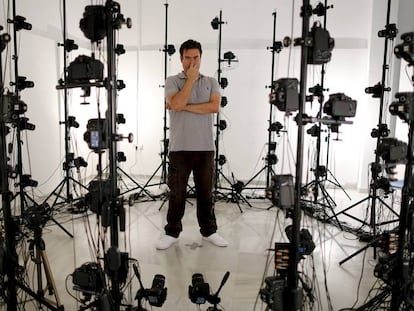The rise of e-sports is a virtual reality
Mired in negative clichés, video games have hooked youngsters all over the world who now follow professional gamers closely. As the electronic sports industry evolves, we present some of its protagonists
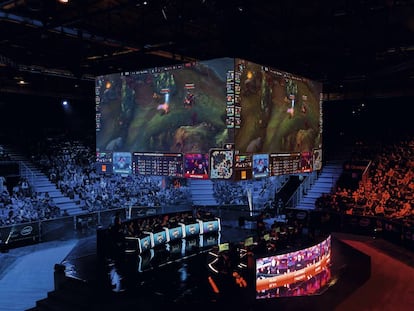
In 1997, Dennis Fong, a native of California, was mentioned in The Guinness Book of Records for being the world’s first professional video game player. For five years, he won all the Doom, Doom 2 and Quake and Quake 2 tournaments and was dubbed the Michael Jordan of esports. Twenty years later, there are thousands of professional gamers, 205 of whom went head to head last December in the Orange Superleague, the highest-profile competition in Spain. So for the people wondering if it really is possible to earn a living from playing video games, the answer is yes.
Video games have been around for more than 40 years. The first tournaments took place in the US in the 1970s, but before esports could become a thing, broadband was needed. It might seem light years ago, but it was only in 2000 that Spain’s communications giant, Telefónica, offered broadband at a flat rate, ending the tortures of the noisy modem that would cut the phone dead whenever anyone went online. Until then, video game fanatics huddled in cybercafés to take part in the first competitions. “At the start, we got together simply for the fun of competing and winning,” says Jorge Sainz, sports director of Movistar Riders. “Then there were tournaments with prizes such as a new keyboard or mouse. We didn’t even get our travel expenses paid, so, as not everybody could afford it, it was practically always the same people who came," he remembers. "The big change came with better internet connection that enabled us to challenge people in other countries; and also with the rebroadcasting of games that inspired fans to go professional and increased the number of spectators.”
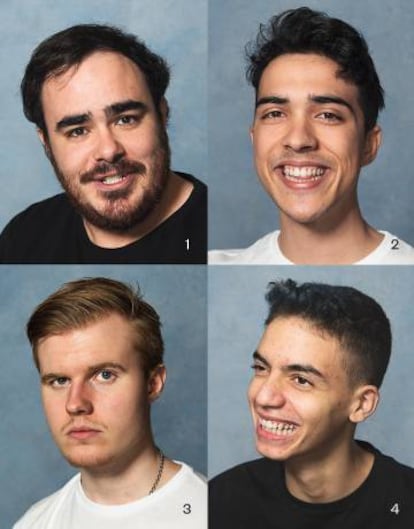
In January 2011, the first rebroadcast of a professional esport competition took place in Spain. It was the debut of the Professional League of Video games (LVP), an initiative begun by a group of friends previously involved in film distribution who wanted to “bring the experience of US competitions to Spain,” says Sergi Mesonero, LVP’s co-founder and strategy director. Now LVP is the biggest esport organization in Spain and organizes the Orange Superleague’s Gamergy along with running two platforms for online competitions between fans, ArenaGG and Playstation League. According to Mesonero, in the past five years, the popularity of the sport has soared. “There were 400 people coming to watch the first national finals in 2011. At the last one there were more than 40,000,” he says.
Our careers are short, so when this stage finishes, I’ll try to stay in the sector Jørgen Elgåen, 'Hatrixx'
In 1998, Blizzard Entertainment launched Starcraft, a strategic game that became very popular in South Korea once the government there introduced broadband. After class, Seoul’s teenagers would be glued to their screens, prompting the Ministry of Culture, Sport and Tourism to create KeSPA, an official esport association. Professional leagues were born. Big companies began sponsoring clubs and providing gaming houses for players in which to train and live. TV channels broadcast tournaments that attracted millions of spectators and esport became a social phenomenon on a par with soccer. Today South Korea is the mecca of esports.
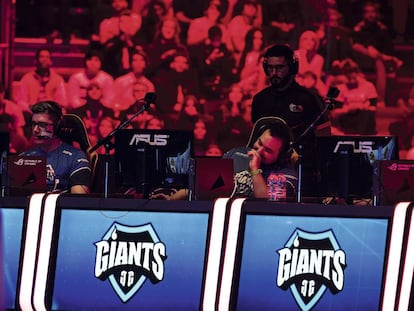
According to market intelligence provider Newzoo, the number of esport spectators rose in 2017 to 385 million globally. In Europe, Spain appears to be something of an esport hub with almost 9% of the population – two-thirds of whom are men – watching the championships involving clubs such as the Giants, G2 Vodafone, Movistar Riders, Mad Lions, Asus Rog Army, Team Queso and x6tence. International players from Spain, meanwhile, include the Moreno Durán brothers, Carlos Rodríguez, Ocelote, and Enrique Cedeño and xPeke. “No other country holds competitions like Spain or has the club structure, investment, sponsors or leagues in the same way we do,” says José Ramón Díaz who owns Giants. “In 2012 when the opportunity to take control of the Giants arose, professional esports didn’t even exist in Spain. There was no investment. But now we’re at the start of something big.”
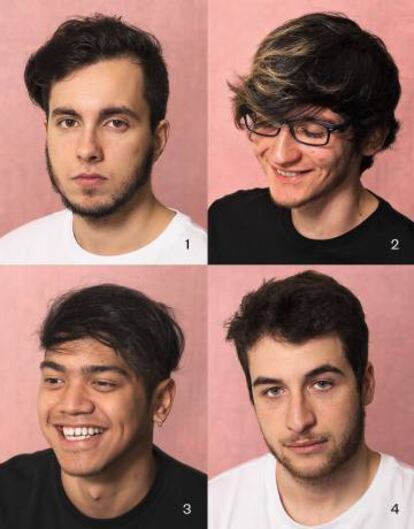
On April 28, 2016, a reality show was shown on MTV Gamers, following the lives of five pale-skinned boys between the ages of 18 and 21 who belonged to the recently launched G2 Vodafone League of Legends team who managed to become Spain’s champions. “Here at Vodafone Spain, we want to make esports more democratic," says Borja Mengotti, senior brand manager at Vodafone Spain. “It’s a huge phenomenon with massive audiences which requires a high-speed connection to compete and that’s where we come in. We are the industry’s ‘ball’,” he says. In 2017, Orange declared it would be sponsoring LVP and Movistar did the same with Movistar Riders, launching a TV channel dedicated to electronic sport – 29 on Movistar Plus. At last those in charge of marketing had found the solution to the conundrum of finding a way to reach millennials and esports fans between the ages of 14 and 35.
The headquarters of Movistar Riders in Madrid is based in premises covering 1,000 square meters and consisting of four training rooms and a small stadium for 70 spectators. Used by 40 players, 11 of whom are foreign, from the club’s six teams, there is also a backup team with a trainer, sports psychologist, medical director, physiotherapist and manager. “There’s no other center like this in Europe,” says Fernando Piquer, CEO of Movistar Riders. “Maybe not even in the world. It’s testament to where we think this is going. We want to draw in the other clubs and consolidate the professional aspect of the ecosystem.”
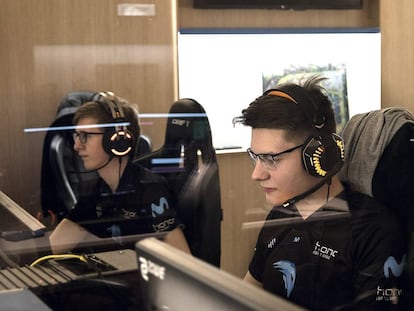
While the on-site training is purely video game oriented, the club’s medical director advises that players use the nearby gym to work out and develop their reflexes. Healthy eating is also promoted. It was the facilities here that persuaded the Norwegian player Hatrixx to choose Movistar Riders. He is 20 years old, but he was just 17 when left his hometown of Trondheim to play esports in leagues in the US and Turkey and now Spain. A player in the League of Legends, he considers it a full-time job. “Our careers are short, so when this stage finishes, I’ll try to stay in the sector,” he says. “There are a lot of options. If that doesn’t work out, plan B is to become a teacher or a policeman. I don’t want to work in an office. I like to have direct contact with people.”

Hatrixx lives in an apartment provided by the club and his morning consists of breakfast, working out and individual gaming. That done, he goes to the center to have lunch with his colleagues. He is considered an aggressive player. “I don’t get stressed out by competitions,” he says. “In fact, I enjoy them. But I find losing hard.” A day’s training can last until 8 or 9pm, a regime only followed by professionals in the League of Legends – the most popular game in the world and one that provides the most spectacular competitions. Members of other leagues train from home and come in every now and then for sessions.
The debate over whether esports are in fact a sport continues to rage. Some argue that there is no reason it couldn’t become part of the Olympics in the future. But for now, it has been decided that there will be esports in the 2022 Asiatic Games to be held in China. “Sport consists of organization, competition, expectation and skills. These sportsmen use their brains, which is the best muscle of all, but there is also a lot of action in the game that requires quick reflexes and strategy. Of course, they don’t sweat but neither do those competing in Olympic archery,” says José Luis de la Serna, the Rider’s medical director. Science appears to back him up. After analyzing a number of gamers over five years, Ingo Fröbose from the University of Colon, concluded that they were real sportsmen
capable of making 400 movements with the keyboard and mouse a minute, four times the average. He also discovered that the amount of stress hormones released during competitions rivals the number released by racing drivers.
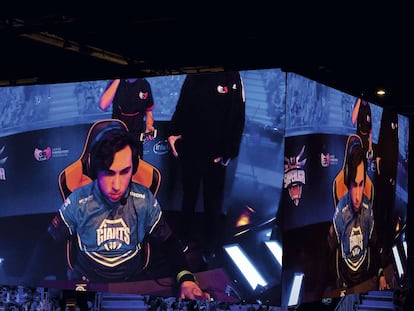
In 2014, Amazon bought Twitch, the YouTube of video games for $970 million. That year, spectators watched 192 billion minutes of gaming. In 2016, the number of minutes increased to 292 billion. “When esports are mentioned, we think of the players but it is important to look as well at the people watching. The phenomenon is complete when you have an audience,” says Piquer. The explosion of Twitch as a streaming platform has prompted businesses to take note. In 2017, esports generated €560 million globally. By 2020 that figure will have risen to €1,2 billion according to Newzoo. These figures are still modest if you take into account that the budget for Barcelona FC is €897 million for the 2017-2018 season. Esports are still in their adolescence but while most of the money made in the sector is from sponsorship and advertising, esport is definitely trending, according to Mesonero from LVP.
Even elite sports personalities such as Fernando Alonso and Gerard Piqué have become involved – Alonso by creating his own F1 team called FA Racing G2 and Piqué by announcing the launch of a soccer league in conjunction with the Japanese video game company Konami. Moreover, companies such as El Corte Inglés, Red Bull , Mahou and L’Oréal have joined forces with businesses in the sector. “More than 60% of the brands investing in esports now are not endemic,” says Ángel Echavarren y Fernando Pons, from the Deloitte consultancy.
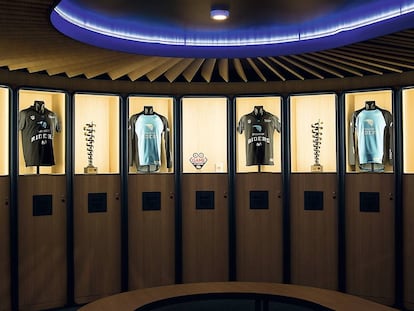
“There are no Messis,” says José Ramón Díaz, owner of the Giants. “The salary of a player depends on the game, the titles, the competitions, the audience and the time dedicated. In Clash Royale, which is in its first six months of playing competitively in Spain, gamers might earn €500 a month before tax. While in League of Legends, some of the professionals in the national competitions can earn as much as €7,000 gross, although that’s not common. Mostly, it’s around €2,000 a month.” A player’s earnings in the League of Legends Championship Series, could be between €150,000 and €180,000 annually, plus bonuses from competitions and personal sponsorships.
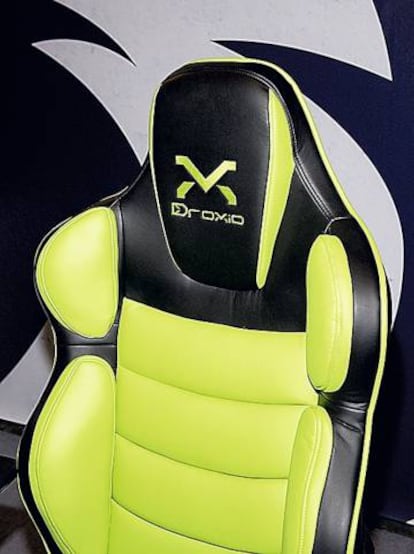
So it looks as though the rise and rise of esports is inevitable. “We have done studies on different sports and there is one thing that keeps coming up – the decrease in spectator numbers. There is no generational replacement and traditional sports, including soccer, are faced with the challenge of attracting the digital generation who don’t make the leap into the actual world,” says Echavarren from Deloitte. “You can see this at games where there are fewer fans between the ages of 15 and 30. So there’s concern and almost all clubs are studying the possibility of getting in on esport.”
A study reveals that gamers release as many stress hormones during a competition as racing drivers
According to Borja Mengotti, it’s definitely time to get rid of the negative clichés. “It’s more sociable than is believed,” he says. “I have adolescent boys and going out to play soccer together is not on the cards. But video games do provide us with a meeting point. More and more parents are not just playing with their children but also with their friends. The millennials are getting older but their interests have stayed the same.”
English version by Heather Galloway.


